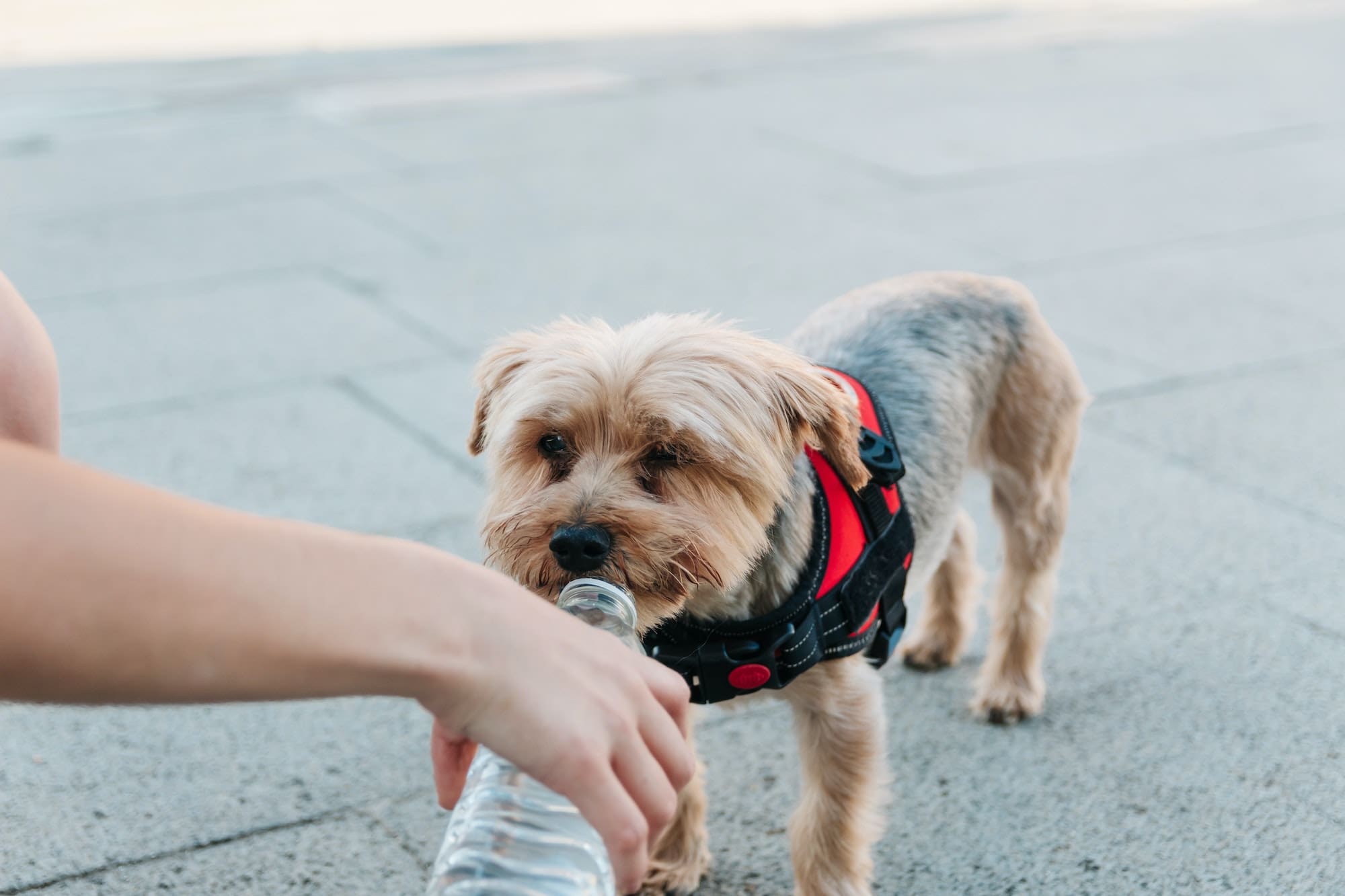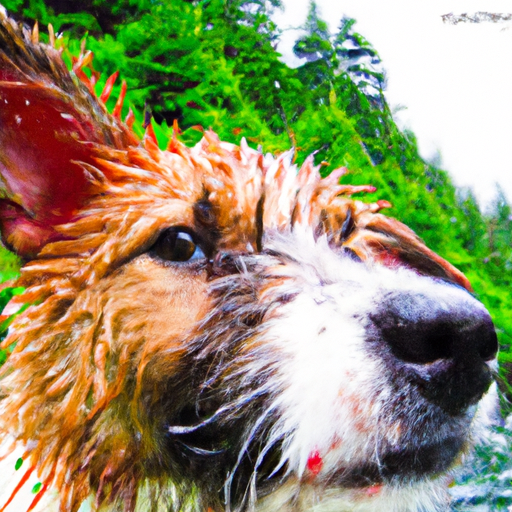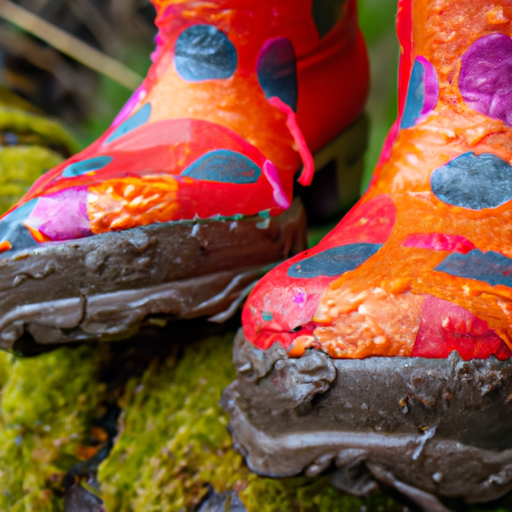As a dog owner, you want nothing but the best for your furry friend, especially when it comes to their well-being. When the seasons change, it's important to adjust your dog's care routine accordingly. From scorching summers to freezing winters, there are specific weather-related tips that can help keep your adult dog happy, healthy, and comfortable throughout the year. Whether it's providing shade and hydration during hot summer days or offering extra warmth and protection during cold winters, this article will guide you with essential tips and tricks to ensure your adult dog thrives in every season.
Winter Care
Adjusting Exercise Routine
During the cold winter months, it is important to adjust your dog's exercise routine to ensure their safety and health. While regular exercise is vital for a dog's physical and mental well-being, extreme weather conditions can pose risks. Instead of long walks or intense play sessions outdoors, consider shorter and more frequent walks to prevent your dog from getting too cold. Additionally, engaging in indoor activities such as interactive toys or training sessions can help keep your dog active and stimulated even when it's too cold to go outside.
Protecting Paws from Ice and Salt
When icy conditions or snowfall occurs, it's essential to protect your dog's paws from ice and salt. Ice can be slippery and cause injuries, while salt and chemical ice melters can irritate your dog's paws. To prevent these problems, consider using dog booties or paw wax to create a protective barrier. Additionally, wiping your dog's paws with a damp cloth after each walk can help remove any harmful substances they may have come into contact with.
Providing Adequate Shelter
Providing adequate shelter for your dog is crucial during the winter months. While most dogs can handle cold weather, they still need a comfortable and warm place to retreat to. Ensure that your dog's shelter is well-insulated and elevated off the ground to prevent drafts and moisture from seeping in. Supplying extra blankets or bedding material can also help keep your furry friend cozy and insulated from the cold.
Avoiding Hypothermia
Hypothermia is a serious condition that can occur when a dog's body temperature drops too low. To avoid this, be mindful of the signs of hypothermia, such as shivering, lethargy, and pale gums. If you suspect that your dog is experiencing hypothermia, it is crucial to take immediate action. Wrap your dog in warm blankets and seek veterinary assistance promptly. Remember, prevention is key, so always monitor your dog's body temperature and limit their exposure to prolonged periods of cold weather.
Preventing Dry Skin
Winter weather can cause dry skin in dogs, leading to itchiness and discomfort. To prevent dry skin, make sure your dog stays hydrated by providing fresh and clean water at all times. Additionally, consider adding a humidifier in your home to combat the dry air caused by indoor heating systems. Regular grooming and moisturizing products specifically designed for dogs can also help keep their skin moisturized and healthy.
Spring Care
Flea and Tick Prevention
As the weather warms up in spring, fleas and ticks become more active. Protecting your dog against these pesky parasites is essential to prevent discomfort and potential health issues. Consult with your veterinarian to find the most suitable flea and tick prevention methods for your dog. Options may include topical treatments, oral medications, or flea and tick collars. Regularly checking your dog for any signs of infestation and using pet-safe repellents when venturing outside can also help keep these pests at bay.
Allergies and Seasonal Shedding
Spring is a season notorious for triggering allergies in both humans and dogs. Keep an eye out for symptoms such as excessive scratching, sneezing, and watery eyes. If you suspect your dog has allergies, consult with your veterinarian to determine the best course of action. Additionally, springtime often brings about increased shedding as dogs “blow” their winter coats. Regular grooming, including brushing and deshedding, can help manage shedding and keep your dog's coat healthy.
Grooming and Bathing
With spring comes the need for more frequent grooming and bathing. As dogs start spending more time outdoors, they can become dirty and accumulate debris in their fur. Regular brushing helps remove any tangles or mats and keeps their coat looking tidy. Baths should be given as needed, using dog-specific shampoos to maintain the natural oils of their skin. Remember to thoroughly dry your dog after bathing to prevent them from getting too cold.
Spring Cleaning Precautions
Spring cleaning can introduce new hazards that may pose risks to your dog. Ensure that all cleaning products are stored securely and out of your dog's reach. Keep in mind that certain cleaning agents, such as bleach, can be toxic if ingested. When cleaning your home, be mindful of open windows or balconies, as dogs may be tempted to jump or slip through. Take the time to check your dog's toys, bedding, and food dishes for wear and tear, and replace if necessary.
Summer Care
Dealing with Heatwaves
Heatwaves can be dangerous for dogs, so it's crucial to take precautions to keep them cool and comfortable. Avoid walking your dog during the hottest parts of the day and opt for early morning or late evening walks instead. When the temperature rises, seek out shaded areas or take advantage of air-conditioned spaces to provide relief from the heat. Pay attention to signs of heatstroke, such as excessive panting, drooling, and weakness, and seek immediate veterinary care if necessary.
Hydration and Shade
Proper hydration is essential during the summer months, as dogs can become dehydrated quickly. Always provide your dog with access to fresh and cool water, especially when they are spending time outdoors. Ensure that your dog has access to shaded areas, either natural or created with canopy or umbrella coverings. Shade allows dogs to escape from direct sunlight and helps prevent overheating.
Protecting from Sunburn
Just like humans, dogs can also suffer from sunburn. Light-haired or thinly coated dogs are especially susceptible to sunburn and skin damage. Apply pet-friendly sunscreen to areas with exposed skin, such as the nose, ears, and belly. Look for sunscreens specifically formulated for dogs, as some human sunscreens can be toxic to them. Limiting time spent in direct sunlight, especially during peak hours, can also help reduce the risk of sunburn.
Avoiding Hot Surfaces
Pavements, sidewalks, and sand can become scorching hot during the summer, potentially causing burns on your dog's paw pads. Before going on walks, check the temperature of the ground by placing the back of your hand on the surface for a few seconds. If it feels too hot for your hand, it's too hot for your dog's paws. Opt for walking on grassy areas or use dog booties to protect their paws from the heat.
Swimming Safety
Swimming can be a great activity for dogs to cool down during the summer. However, not all dogs are natural swimmers, and even those who are may need supervision and assistance. Always introduce your dog to water gradually, providing a safe and shallow area for them to get comfortable. If your dog is not a confident swimmer, consider using a dog life jacket for added safety. Remember to rinse your dog with fresh water after swimming to remove chlorine, salt, or other chemicals that may irritate their skin.
Fall Care
Adjusting Exercise Routine
As the temperatures start to drop in the fall, it is necessary to adjust your dog's exercise routine accordingly. Make sure to check the weather conditions before going out and avoid outdoor activities during extreme weather. Be attentive to signs of discomfort, such as excessive shivering or reluctance to go outside. If the weather permits, take advantage of the crisp autumn air and engage in invigorating walks or play sessions to keep your dog active and mentally stimulated.
Weatherproofing the Living Space
Fall brings rainy weather and potential storms, so it's crucial to weatherproof your dog's living space. Check for any leaks or drafts in their shelter and ensure it remains dry and comfortable. If your dog spends time outdoors, consider installing a well-insulated doghouse or providing a covered area where they can seek shelter from rain and wind. Using waterproof bedding and providing extra blankets can also help keep your dog warm and cozy.
Fall Pet Allergies
Similar to spring, fall can trigger allergies in dogs as well. Keep an eye out for symptoms such as itching, redness, or ear infections. If you suspect your dog has fall allergies, consult with your veterinarian for proper diagnosis and treatment. Regular grooming and cleaning, including wiping your dog's paws after outdoor walks, can help remove allergens from their skin and reduce the severity of allergic reactions.
Preventing Parasites
While fleas and ticks may be less active during the fall, it's still important to remain vigilant in preventing parasite infestations. Continue using flea and tick prevention methods recommended by your veterinarian, and regularly inspect your dog for any signs of these pests. With leaves falling, be cautious of foxtails and other plant materials that can become lodged in your dog's ears, nose, or paws. Regularly brushing your dog's coat can help remove any debris and reduce the risk of potential problems.
Year-Round Care
Maintaining a Balanced Diet
Feeding your dog a balanced and nutritious diet is fundamental for their overall health and well-being. Consult with your veterinarian to determine the appropriate type and amount of food for your dog's specific needs. Provide fresh water at all times and monitor their eating habits to ensure they are maintaining a healthy weight. Avoid giving them table scraps or human food, as certain ingredients can be harmful to dogs.
Regular Vet Check-ups
Regular veterinary check-ups are a crucial part of year-round care for your dog. Routine examinations allow your veterinarian to assess your dog's overall health, detect any underlying issues, and provide preventative care. Keep up to date with vaccinations, parasite prevention, and dental check-ups. Regular check-ups also provide an opportunity to discuss any concerns or changes in your dog's behavior or health with your veterinarian.
Exercise and Mental Stimulation
Physical exercise and mental stimulation are vital for a happy and well-adjusted dog. Regularly engaging in activities such as walks, runs, fetch, or obedience training helps your dog burn off excess energy and maintain a healthy weight. Mental stimulation, such as puzzle toys, treat-dispensing toys, or training sessions, helps keep your dog's mind sharp and prevents boredom or destructive behaviors.
Importance of Vaccinations
Vaccinations play a pivotal role in keeping your dog protected from various infectious diseases. Regular vaccination schedules, as recommended by your veterinarian, help prevent illnesses such as rabies, distemper, parvovirus, and more. Vaccinations not only safeguard your dog's health but also contribute to the overall well-being of the canine community by preventing the spread of contagious diseases.
Socialization and Behavioral Training
Socializing your dog from a young age is essential to promote good behavior and ensure they feel comfortable in various environments. Exposing them to different people, animals, and situations helps prevent fear or aggression. Additionally, investing time in proper behavioral training improves communication between you and your dog, strengthens the bond, and sets the foundation for good manners and obedience.
Maintaining a Comfortable Environment
Creating a comfortable environment for your dog is crucial for their well-being. Provide a cozy and clean sleeping area that is free of drafts and away from noisy or high-traffic areas. Regularly wash your dog's bedding and clean their living space to prevent the buildup of dirt or parasites. Pay attention to temperature control, ensuring your home is adequately heated or cooled to keep them comfortable throughout the year.
Taking care of your dog's seasonal needs is an essential part of responsible pet ownership. By adjusting their exercise routine, protecting their paws, providing adequate shelter, and preventing common weather-related issues, you can ensure your furry friend remains healthy and happy throughout every season. Remember to address year-round care by maintaining a balanced diet, scheduling regular vet check-ups, providing exercise and mental stimulation, prioritizing vaccinations, emphasizing socialization and behavioral training, and creating a comfortable living environment. With these tips in mind, you and your dog can enjoy each season to the fullest while keeping their well-being a top priority.






